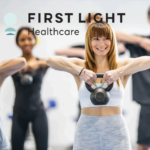These feet are made for walking – Bush-walking Part 1
Orthopeadic Surgeon, Dr Danielle Wadley shares expert advice on bushwalking
Today we are going to talk more about walking.
Yes, walking.
That movement you perform on a daily basis.
Walking is very underestimated. Whether it is a means of exercise, a form of transport or a social outing, walking is great exercise, and can have a positive impact on our general and mental well being.
Walking is a low impact exercise which is easier on joints which have degenerative changes, allowing reduced impact when compared to activities such as running. Weight-bearing exercise helps to maintain bone mineral density. It can also assist you with weight management and we all know that those extra kilograms place more stress on the lower limb joints with every step. There are many health benefits to walking.
Now is a great time to get out and walk, ensuring we maintain social distancing requirements.
However, not all walking is the same.
Bush walking and foot and ankle problems

Walking in the Australian bush is one of life’s simple pleasures and we are fortunate enough to be surrounded by many beautiful State and National Parks.
However, bush walking can play havoc on vulnerable feet or ankles.
The bush tracks can be hard packed, or very soft and uneven with lots of loose gravel or rocks.
Particularly if there are hills and large steps with many small rocks thrown in, this creates a challenging scenario, particularly for those dealing with foot, knee and ankle issues.
Easy does it
If you have an acutely inflamed painful foot or ankle, for example very painful plantar fasciitis or insertional Achilles tendinopathy, then limited walking is for you.
If you are recently recovering from injury or surgery, then this is also your category.
This includes a recent ankle sprain.
It is best to:
- Concentrate initially on your rehabilitation exercises first.
- Then slowly reintroduce other forms of low impact exercise.
- Examples are stationary bike or walking in a pool.
Remember, we don’t want to make the pain worse, or risk re-injury.
A great place to start walking in Byron is at the Boggy Creek Walk https://www.nationalparks.nsw.gov.au/things-to-do/walking-tracks/boggy-creek-walk an easy, short walk that allows you to meander through the rainforest at your leisure between Minyon falls and Rummery Park campground in Whian Whian State Conservation Area.
For those on the Gold Coast, the Coombabah Lake Conservation Park https://www.goldcoast.qld.gov.au/thegoldcoast/coombabah-lakelands-conservation-area-27193.html is a great place to start. The Melaleuca boardwalk is good if you need something flat, at Schuster Park Peninsula. Coombabah doubles as a conservation park, but both may provide opportunites, so keep your eyes out for the local wildlife!
A Little More Challenging
If your pain is less intense, or you are further along your recovery period after surgery or recent injury, then you should be managing to slowly introduce and increase more walking into your exercise regime. It is best to start with a flat, easy track or longer boardwalk.
- Ensure you wear supportive footwear. A good example are the Hoka One One shoes, which are well cushioned and have a rocker sole.
- Begin with flat walking, then gradually increase inclines and stairs.
- Gradually increase duration and distance each week.
- Often it is better to go for shorter walks more frequently.
A suitable walk for this group in the Byron region is the Big Scrub Loop https://www.nationalparks.nsw.gov.au/things-to-do/walking-tracks/big-scrub-loop-walking-track a 1.5km loop leads through superb subtropical rainforest within Nightcap National Park, near Lismore
Gold Coast walkers can try Tallebudgera Creek Conservation walk https://www.goldcoast.qld.gov.au/thegoldcoast/tallebudgera-creek-conservation-park-27519.html, a 1.6km walk. Suitable for moderate fitness levels, the walk includes bitumen, a 250-metre boardwalk over the water, a mix of flat and uneven level tracks and some stairs.
Stay tuned for Part 2 coming soon!
If you are experiencing foot or ankle problems, please contact us on 6685 6326.



